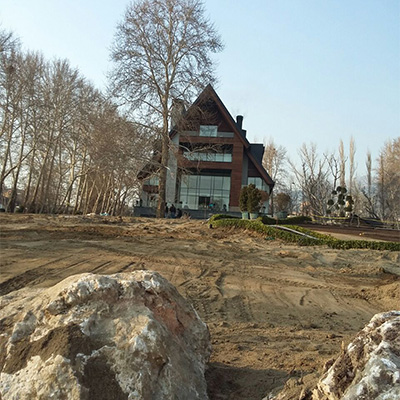“Community Champions” is a media campaign led by the South Okanagan-Similkameen Local Immigration Partnership (SOSLIP) and supported by SOICS & Castanet. We share stories that raise awareness about the contributions that immigrants make to the community while introducing the small businesses of new Canadians.
Meet the family of engineers, including Farid, Nahid and their twin daughters Kimia and Kamand. They came to Penticton from Tehran, the capital of Iran.
Compared to the city with the population of over 10 million, moving to a small city was quite a change. But the family welcomed that change, seeking new challenges and opportunities for growth.
Farid is the oldest child in his family, followed by two sisters and a brother. Farid was known as a handy man in his family.
“I believe that life has its ups and downs, depending on how you perceive difficulties or problems. When you change your mindset to see life as mostly problems that need solving, you will find joy in solving those problems,” says Farid.
Other than solving problems, Farid’s passion has always been in water preservation systems. Thus, he became an engineer in water management and irrigation. He joined a company called Ghods Niroo Engineering right after the university. There, he met Nahid, who joined the company as a water resource engineer a few years after Farid.
They got married in one year, and had their twin daughters soon after. Both daughters later received their BA in Engineering (Industrial Engineering and Energy Engineering).
After five years at the company, Farid realized that his role in conventional projects was limiting, and he needed to explore new ideas. He decided to start his own business.
“I knew I could do more. My passion was to help others use water efficiency systems for water management and Irrigation. Similar to South Okanagan, the amount of annual precipitation in my home country is very small – around 250 millilitres on average. So, water preservation and efficient irrigation is very important,” shares Farid.
After over 25 years, 800 projects and satisfied clients, Farid began to look for new challenges. That’s how the family ended up in Canada.
Through the BC Provincial Nominee Regional Pilot, Farid applied as an entrepreneur to start a business in Penticton, and successfully passed the vigorous selection process.
“It was very exciting but also very challenging. …Starting over in the new country was daunting…everything was new and unfamiliar,” continues Farid.
With so many wineries, vineyards and orchards in the South Okanagan that could use Farid’s services, as well as the limited precipitation that requires preservation, Penticton was an easy choice.
Farid and Nahid started off by connecting with the South Okanagan Immigrant and Community Services (SOICS) to improve their language skills and establish new connections. Their children are thriving. Nahid is currently working in her field, and their daughters are exploring new exciting avenues.
Kimia is working on event planning and design and Kamand on digital marketing, before they pursue graduate studies in engineering.
Farid has started his business WaterMatic Systems Inc. that offers smart irrigation systems, creating water features (e.g. fountains, ponds), landscaping and more.
A recent project involved developing a treatment system for the pool at Penticton Lakeside Resort. He’s also working with five vineyards to enhance sprinkler irrigation systems and automation, sharing the results for research and development.
“Many wineries and orchards have equipment for automated irrigation but don’t use them because they think it’s difficult to use. But it’s not! if you’re watering your vineyard or home 2-3 times a week for 4-5 hours each time, most of the water is wasted because in the sandy and loamy soil in the region, more watering it is out of reach the roots. Drip irrigation is 98% efficient, and sprinkler systems are 86-89 per cent efficient. Plus, setting up the automated watering for early mornings and for shorter periods allows for low evaporation, and with some sensors, ensures water goes directly to the roots,” Farid shares in his opinion.
Farid believes that clients’ trust is the most important aspect of any business, and the most effective advertisement is carried out by the happy customers through “word of mouth.”
The new residents of Penticton are full of hope. They love their new hometown.
Farid loves sports. He skies, plays tennis, runs and jogs. Nahid enjoys yoga, and they like to go for walks along the lakeshores. The girls go to the gym and explore their creativity in design and marketing. The family likes to get together for a nice dinner with friends.
“People are very kind and friendly in this community. They help each other, and it is very important for newcomers. We hope to grow together here as a family for a better future. …If you were successful in your home country, you can be successful in another country,” Farid concludes with a kind smile.
“Every day you should have a plan and solve at least one problem. It is like a chess game — you need to plan each move, and your next move depends on your previous one. You just need to keep going, one step at a time.”



